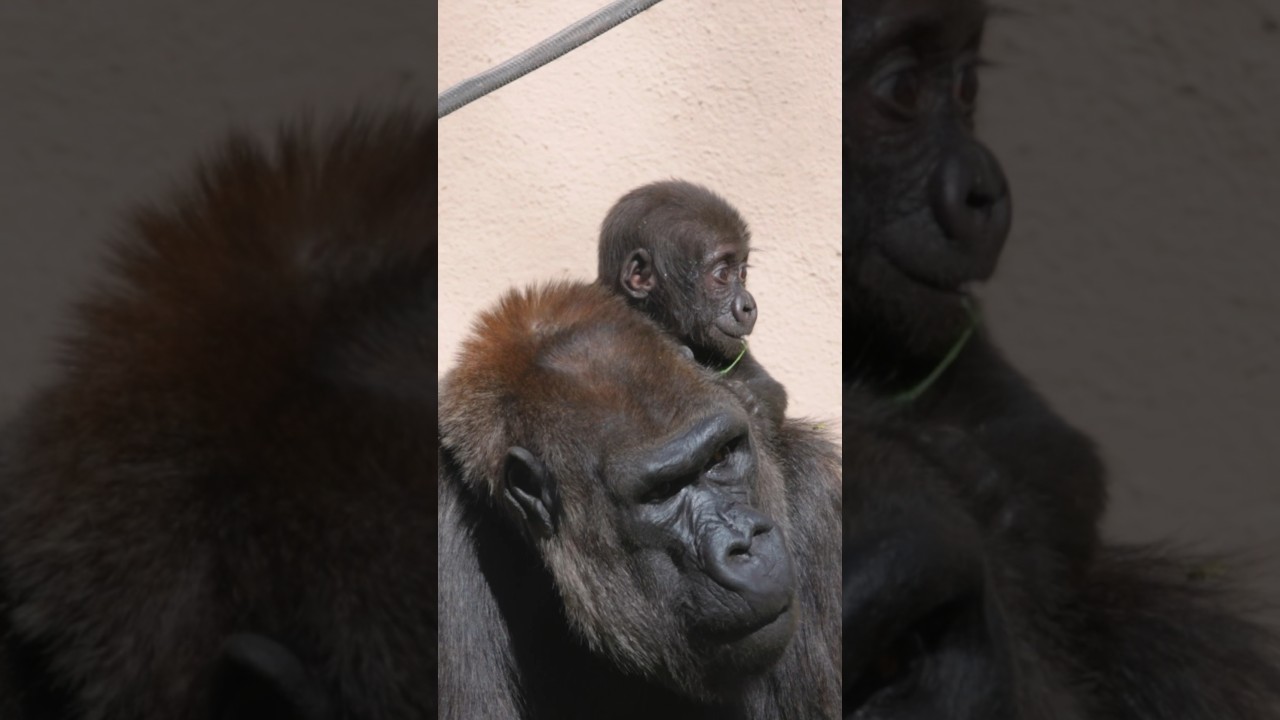– The significance of first outdoor experiences for baby animals in their development and integration into the troop.
– The role of zoo management in facilitating natural behaviors in captive animals.
– Wildlife conservation efforts and the importance of educational programs in fostering a connection between humans and animals.
– Challenges in maintaining the health and well-being of animals in captivity and strategies to mitigate them.
Witnessing a baby animal’s first venture into the outdoors, particularly with a troop, is both a pivotal and charming moment that marks the beginning of its journey into learning social cues, navigating its environment, and integrating itself within its social structure. Such events are crucial in the overall development of the animal, providing it with the necessary experiences to grow physically and mentally healthy. Zoo management teams carefully monitor these initial outings to ensure the younglings’ safety and observe their behaviors, interactions, and adaptation to their new surroundings. This careful oversight allows zoos to mimic natural environments as closely as possible, which is essential for the animal’s well-being.
Zoo management plays a critical role in the lives of captive animals, encompassing habitat design, dietary needs, and the facilitation of natural behaviors through environmental enrichment. For instance, when a baby heads out to the yard for the first time with the troop, zookeepers might have previously introduced elements in the enclosure that mimic those found in the animal’s natural habitat. This could include a variety of substrates, vegetation, climbing structures, and even water features, depending on the species. These efforts are designed to physically and mentally stimulate the animals, encouraging exploration and learning, which are crucial for a young animal’s development. Additionally, zoos often implement specific training programs to help young animals adapt to their environments and effectively manage interactions with their human caregivers and fellow species members.
Wildlife conservation is at the forefront of the modern zoo’s mission, strongly emphasizing education and creating a bond between visitors and the natural world. Educational programs and encounters aim to enlighten guests about the plight of animals in the wild and the efforts being made to protect them. The sight of a baby animal exploring its environment for the first time captures the hearts of observers. It provides an excellent opportunity for zoos to engage their audience in conversations about wildlife conservation. These moments are leveraged to raise awareness about the species’ status in the wild, habitat destruction, and the illegal pet trade, highlighting the importance of conservation efforts in situ (in their natural habitats) and ex-situ (outside their natural habitats, such as in zoos).
However, keeping animals in captivity comes with challenges, particularly regarding their physical and mental health. Ensuring animals remain healthy and exhibit natural behaviors is a continuous challenge for zoo professionals. It necessitates a comprehensive understanding of the species’ needs, behaviors, and natural history. Challenges include preventing the development of stereotypic behaviors, which are repetitive, invariant behaviors with no apparent goal or function, often indicative of stress or boredom. Strategies to mitigate these challenges include the design of dynamic enclosures that change periodically, providing novel stimuli, and introducing foraging and problem-solving opportunities to simulate the challenges animals face in the wild.
Moreover, integrating animals into established groups or troops, especially concerning babies experiencing their outdoor environment for the first time, requires careful planning and constant monitoring to ensure smooth transitions and the development of healthy social structures. Zoo management professionals spend considerable time observing animals for any signs of stress or aggression and employ various strategies to facilitate positive introductions and ongoing social harmony.
Educating the public about these aspects of animal care and the complexities involved in wildlife conservation helps foster a deeper understanding and appreciation of the natural world. It encourages sustainable behaviors and supports conservation initiatives that protect animals in their natural habitats. The experience of seeing a baby animal venture outdoors with its troop is a powerful reminder of the vulnerability of wildlife and the ongoing efforts required to ensure their survival both in captivity and the wild.
In summary, the first outdoor experiences of baby animals with their troop are more than enchanting moments for zoo visitors; they represent the culmination of extensive planning, care, and dedication from zoo management, with the ultimate goal of promoting healthy development, natural behaviors, and conservation awareness. Through educational programs, careful habitat design, and a focus on animal well-being, zoos play an essential role in wildlife conservation, connecting people with nature and inspiring the next generation of conservationists.
*****
Source Description


